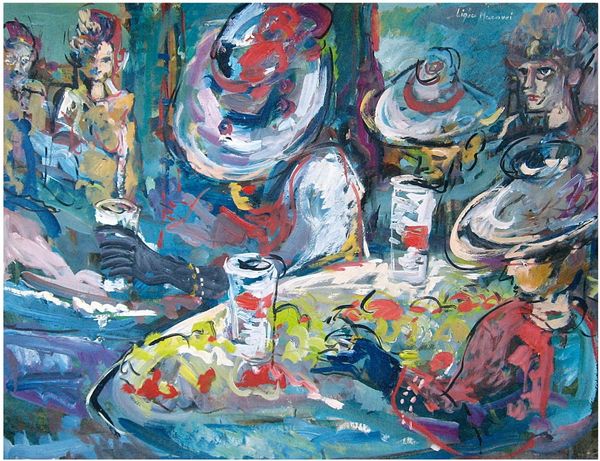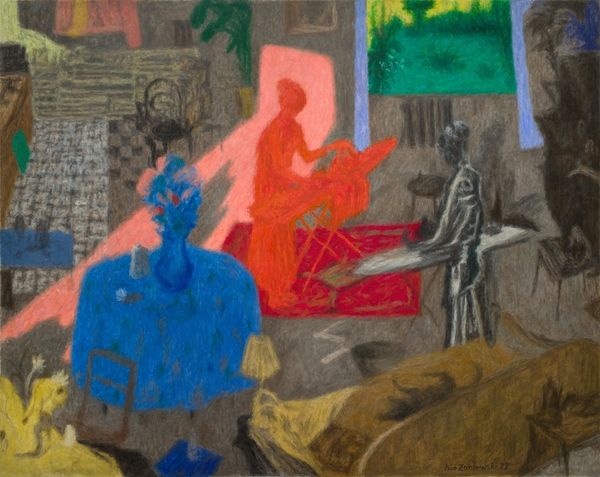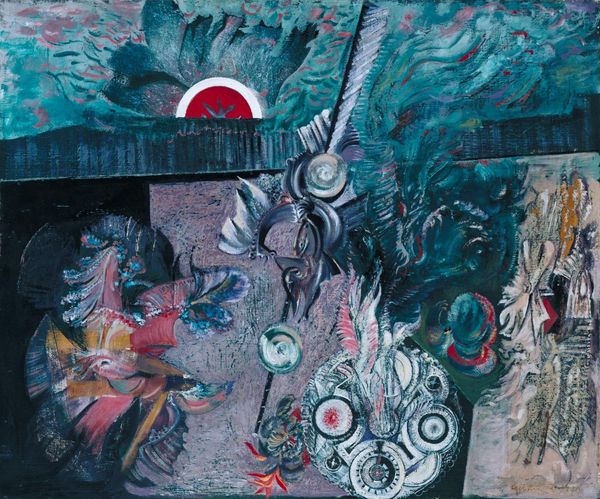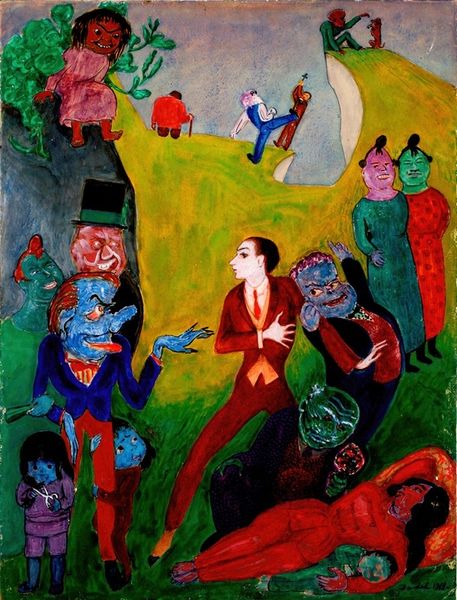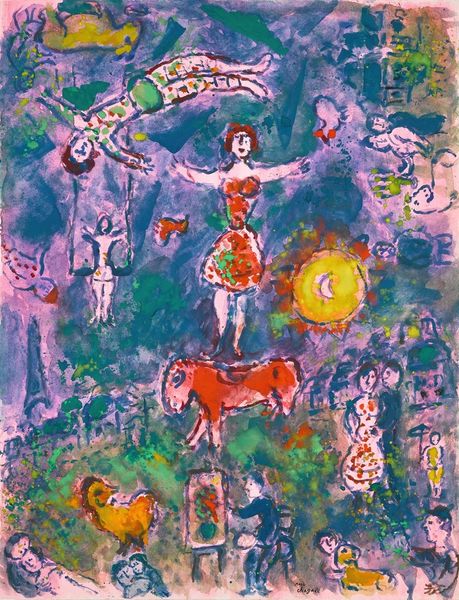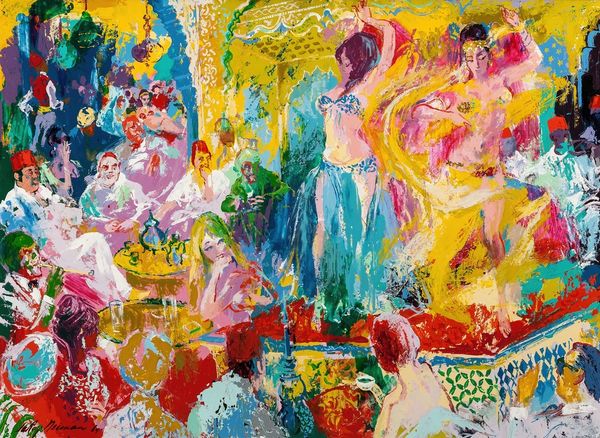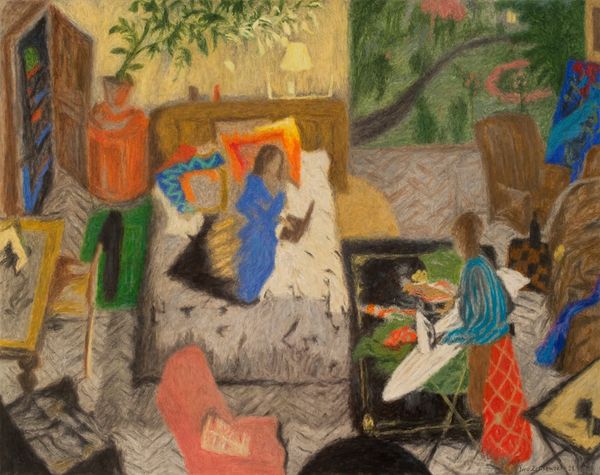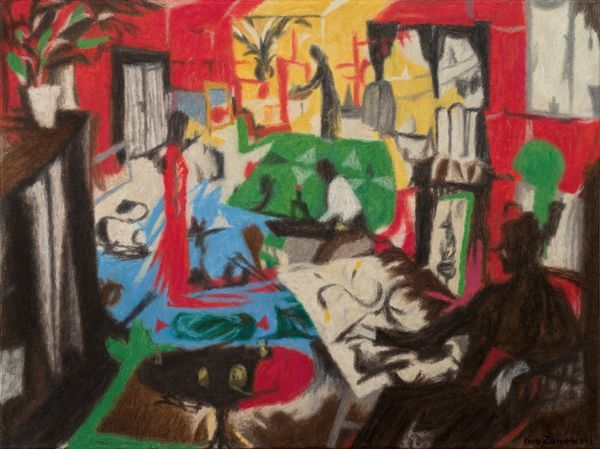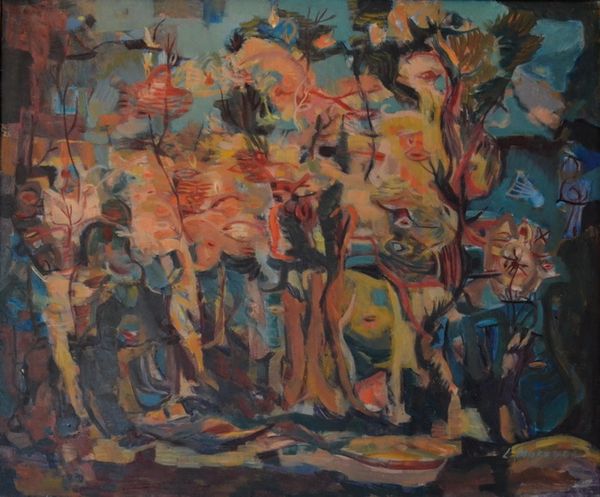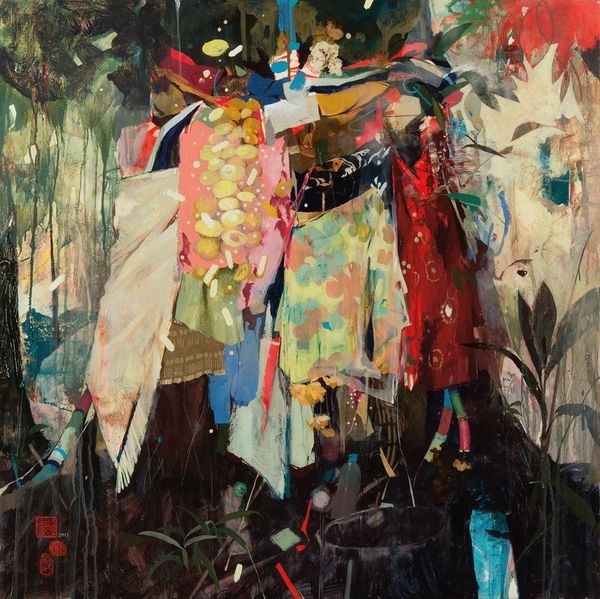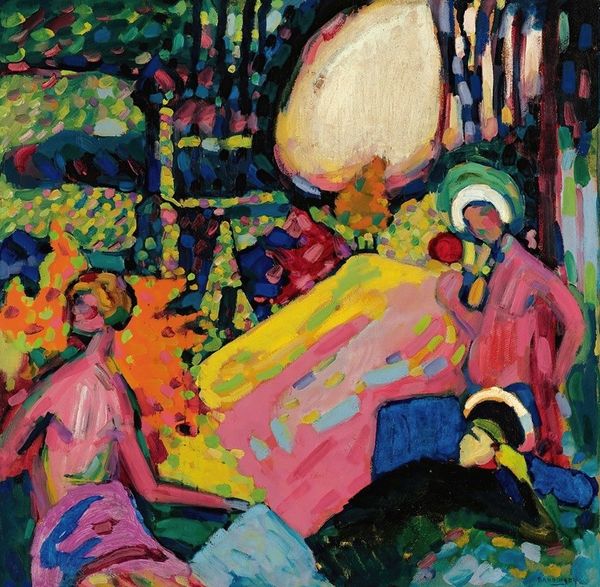
Copyright: Candido Portinari,Fair Use
Curator: We're looking at "Coffee Harvest," painted in 1958 by Candido Portinari. Editor: The composition is immediately striking, isn't it? Such movement, but with a grounded, almost heavy feel. It feels like a dance happening in thick mud. Curator: It does capture the labor involved. Portinari often focused on the lives of Brazilian workers. He was very involved in social realism. This piece, with its expressive figuration, moves towards that focus. Oil on canvas; he's really building up the surface. Editor: Exactly! I'm drawn to the way the materials become part of the message. The heavy impasto mimics the physical demands of the harvest. You can almost feel the weight of those baskets. I'm especially looking at that figure filling the burlap sack - note the bent back! This feels connected to depictions of peasant life that you would see much earlier in painting history. How did these images work within a larger societal context in Brazil at the time? Curator: The mid-20th century was a time of great industrialization in Brazil, but Portinari's paintings, which were exhibited widely, often reminded viewers of the human cost of that progress and of the labor of largely marginalized peoples, especially rural farmers. These themes would resonate heavily through liberation theology circles in Latin America soon after. He paints the coffee workers at the center of Brazil's global image but gives them this humanity that resists the exoticization that's frequently present when the west looks at Latin America. Editor: That contextual layering adds so much. You see this interplay between a romantic vision of labour and a grim reality. I'm really appreciating how his stylistic expression emphasizes certain figures by rendering others as green. It speaks volumes. I see commentary on industrial society. Curator: It gives them an otherworldly cast, almost as if to point out that their labor, their bodies, are entirely consumed in the pursuit of material means, to the point that they are disfigured, less than human. He does use color as such a powerful expressive tool here. It speaks to the cost of material comforts. Editor: It makes you rethink what goes into something as simple as a cup of coffee. The process of its harvesting and the politics behind it are not immediately obvious. Curator: Exactly, it goes far beyond an abstract scene! Editor: This has made me consider the painting through a very different lens. Curator: And I, the impact of how artistic style elevates a critical message!
Comments
No comments
Be the first to comment and join the conversation on the ultimate creative platform.
